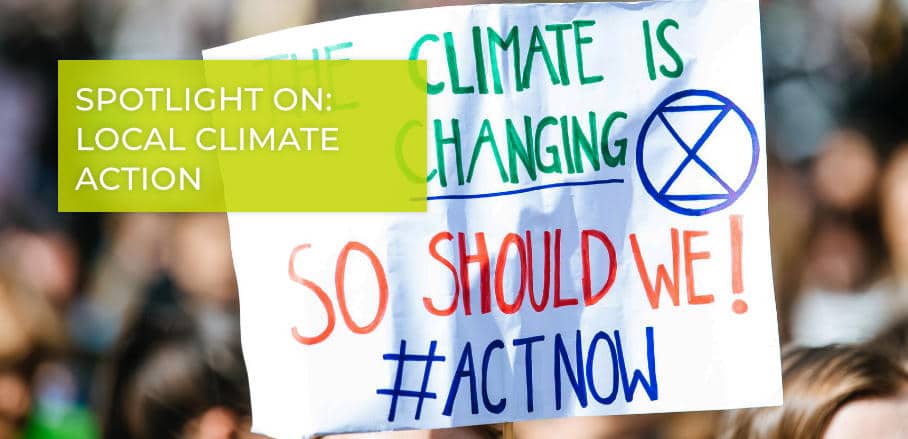Mobilising Intersectional Climate Action: Lessons from Barcelona
There is growing urgency for cities to take integrated climate action that can address inequalities more holistically. Barcelona is leading the way by applying intersectional thinking to urban planning. By Ana T. Amorim-Maia
Around the world, local governments engaged in climate action continue to face compounding crises attributed to rising socio-economic inequality, gender-based violence, crises of care, and, most recently, the COVID-19 global pandemic. The need to address these individual crises one-by-one can detract from comprehensive efforts toward more resilient and inclusive futures and, depending on the strategies implemented, may even exacerbate already deep social, economic, and political divisions in cities.
By embedding intersectional thinking in climate action, however, local practitioners can better confront the overlapping systems of oppression and disadvantage that restrict people’s capacity to cope with climate impacts and other compounding crises.
Barcelona, Spain, is a key case for understanding how intersectional climate action can get operationalised, as the city is an early adopter of intersectional thinking in urban policies and interventions. The current mayor of Barcelona, Ada Colau (2015-present), is the first woman to hold the office and places feminism, the fight against inequalities, the promotion of a more caring city, public participation and climate action at the centre of governance approaches. Here are the five ways in which Barcelona is realising an intersectional pivot in climate action.
Tackling Gender Inequality
Since 2016, Barcelona has been embedding feminist policies in its governance structure through its “Plan for Gender Justice”, which aims at combating gender inequalities and transforming the city from a feminist perspective. The Plan focuses on strengthening mechanisms for the political, social and technological participation of women, as well as rethinking public spaces, infrastructures, mobility, housing, social, educational, and health care services from the principle of gender fairness.
The city also instated the incorporation of a gender perspective to all urban projects, situating everyday life at the heart of urban decisions and applying inclusive decision-making approaches to respond to the needs and desires of society as a whole. Among the actions proposed is the planning of public and green spaces from a gender perspective, such as the “Superblocks”, which are based on participatory diagnostics and proposals for a feminist transformation in the urban model at the local level.
Taking Politics and Ethics of Care Seriously
Barcelona is an early adopter of care policies and the institutionalisation of ethics of care, which focuses on interpersonal relationships and collective responsibility of caring needs in society. In 2017 the City launched a “Government Bill for Democratizing Care Work”, consisting of 68 initiatives geared toward a fairer distribution and responsibility of care work from an intersectional perspective.
The bill aimed to turn Barcelona into a pioneering “Caring City”, establishing tools to recognise the social value of care work and to ensure the right to care and be cared for under fair conditions. This bill is particularly timely given the outbreak of the global pandemic, which intensified the care crisis and laid bare the need for governments to prioritise health and well-being over economic growth.
Redressing the Drivers of Climate Vulnerabilities
Barcelona is driving initiatives to reduce differential climate vulnerabilities through projects that seek equitable access to and inclusiveness of urban green amenities. An illustration is the development of climate adaptation projects called “climate shelters”. They engage the local population in the decision-making and implementation of multifunctional spaces that provide relief from extreme heat and heatwaves in public buildings and spaces, particularly those that serve vulnerable populations.
The city’s target is to have 100 per cent of the population living within a five-minute walk from a climate shelter by 2030. To reach that goal, the city has already identified 990 existing and potential spaces that could be transformed into said shelters, including 80 parks and gardens, 130 schools, 330 public facilities and 450 private facilities.
Adopting Place-Based and Place-Making Approaches
In 2019, Barcelona launched the initiative “climate shelters in schools”, which aimed at transforming schoolyards considered vulnerable to heat into so-called ‘cool islands’ open to all citizens. The project included innovative techniques that applied green (vegetation and shading), grey (improvements in insulation and ventilation) and blue (incorporation of water points) measures.
The actions followed a micro-local model of governance, where pupils, teachers and various institutions and experts co-designed the spaces based on their specific needs. In one year, the pilot project transformed eleven schools into climate shelters, replacing 1000 square metres of concrete with soil and vegetation, adding 2213 square metres of new shaded spaces with pergolas and awnings, planting 74 trees and installing 26 new water points.
Promoting Cross-Community Climate Action and Resilience Building
Barcelona has a strong focus on promoting citizen action, by supporting projects undertaken by local organisations and the general public. An emblematic initiative is a municipal programme called “Pla BUITS” (“Vacant Lots Plan”), in which the city council revitalises disused land, such as empty lots or wastelands, for temporary use by public or private non-profit entities.
Since 2012, these various entities have transformed the vacant lots into community spaces, creating urban gardens of various types and with various purposes, such as educational and therapeutic tools for people with intellectual and physical disabilities, unemployed, youth and older people. Projects also focused on bioconstruction, rainwater collection and environmental education.
Lessons Learnt
As local governments formulate climate action plans, the compounding and overlapping vulnerabilities of historically marginalised residents continue to be addressed independently or remain overlooked by typical adaptation practices. The city of Barcelona shows practical examples of how to move towards intersectional climate action at the local level, with policies and projects that take into account multiple social and environmental inequities.
While not all strategies presented are explicitly related to climate action, many call for new transversal institutional practices across domains and sectors, thus introducing new narratives about what planning for intersectional climate action can look like in the urban sphere.
